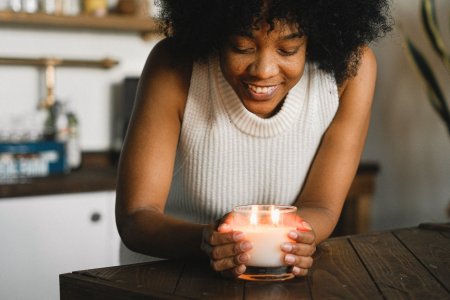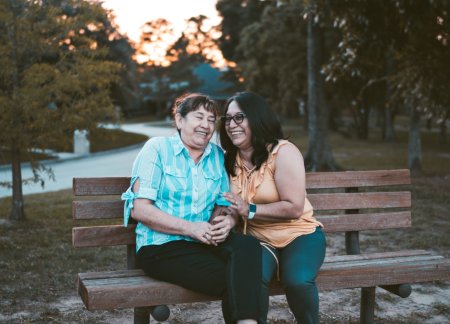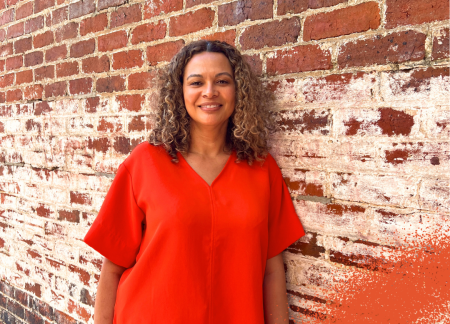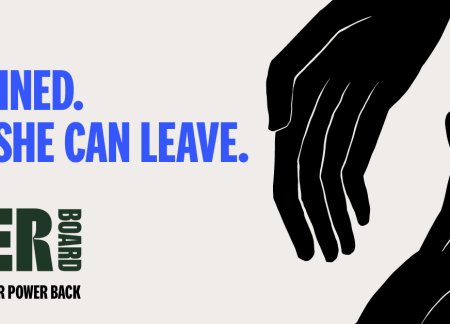At Luma, we work to prevent family and domestic violence. This starts with demystifying it, so we can all see the early signs.
This questionnaire addresses some common misconceptions around gender-based violence. It was thoughtfully created by our family and domestic violence specialists, for the campaign: 16 days of activism against gender-based violence.

- Why doesn’t she just leave?
Women stay in abusive relationships for many different reasons, and it can be very difficult for a woman to leave an abusive partner – even if she wants to. Abuse rarely starts at the beginning of a relationship, but when it is established and often harder to leave. A woman may be frightened for her life or for the safety of her children if she leaves; she may have nowhere to go; she may have no financial independence. Abusers often isolate their partners from family and friends in order to control them, making it even more difficult for an abused woman to exit the relationship.
- Why does she provoke him?
This myth is widespread and deep-rooted. It is often based on the belief that the man is the head of the family, and that his role is to punish his partner or children if they act in a way he doesn’t approve of. It is a dangerous myth, as this “provocation” theory leads to victim blaming, meaning the abuser doesn’t need to take responsibility. Abuse or violence is never the victim’s fault, it is a choice that the abuser is making.
- Family & domestic violence mostly happens in low-income families.
Family violence occurs among all types of families, regardless of income, profession, religion, ethnicity, educational level, sexual orientation or race. A common and dangerous misconception is that middle to high income families are less likely to experience family and domestic violence.
- He is a good father, and he never hurts the children.
There are many ways that children are exposed to domestic and family violence – beyond hearing or seeing the violence. For this reason, when it occurs in a family with children, domestic and family violence is always child abuse. The effects vary from child to child and are impacted by other factors, such as poverty or marginalisation on the basis of culture or race. The secondary effects of violence, for example unstable housing, lack of access to education, and poor access to antenatal and postnatal care, can also significantly impact on children’s safety and wellbeing. Part of what makes a “good father” is modelling how to treat others and demonstrating respectful relationships.
- A good mother would protect her children.
Women may stay in the abusive relationship because they are fearful for themselves and their children’s welfare if they do leave. Women think and act to shield their children from abuse by using “protective behaviours” often at the expense of their own safety. Mothers will often protect their children by employing different coping strategies to reduce the chance of the children witnessing or experiencing the violence and may have already developed a safety plan with their children. There is also a genuine fear held by many, that the abuser will take their children away, if they leave.
- It’s not really domestic violence, he’s never hit her or laid his hands on her.
The term Family and Domestic Violence describes patterns of behaviour intended to coerce, control and create fear within current or former intimate partners or family relationships. Violence refers to a range of abusive and controlling behaviours, including but not limited to, physical violence, sexual violence, emotional/psychological abuse, spiritual abuse, cultural abuse, systems abuse, undermining or disrupting parenting, using or harming children to coerce or control their mother, financial abuse and social isolation.
- Women are just as violent as men in relationships.
In male-female intimate relationships, men who choose to be abusive and/or violent to their partners typically use violence and psychological intimidation to control women. This male behaviour causes women to respond in adaptive ways, depending on their personalities and coping mechanisms. Men are significantly more likely to be repeat offenders of domestic violence and significantly more likely than women to use physical violence, threats and harassment.
- If it’s that bad, why doesn’t she report it to the Police?
There are a multitude of reasons that someone chooses not to report to Police. Some of which, can include: a fear of not being believed; the abuser has told them that the Police will take his side; cultural reasons; worried that child protection becomes involved; fear of escalation in behaviours; shame around others finding out; lack of evidence to “prove” it; having nowhere else to go; fear of losing their visa; not knowing their rights; pressure from family, friends and/or community to stay; belief or hope that the abuse will end.
- Domestic violence isn’t so much of a problem in LGBTIQA+ relationships.
People who identify as lesbian, gay, bisexual, trans, intersex or queer (LGBTIQ) experience intimate partner violence at similar rates as those who identify as heterosexual. It is also felt that incidents are underreported in the LGBTIQA+ community due to the fear of discrimination or lack of available supports. Though the majority of domestic violence awareness campaigns typically focus on heterosexual couples, domestic violence does not discriminate. There can be multiple aspects of intimate partner violence that can be unique to the LGBTIQA+, such as threatening to “out” their partner as a form of abuse.
- Women tend to exaggerate or make false claims about domestic violence.
This is simply not the case. In fact, the opposite is true – family violence is often underreported for fear of not being believed. This type of claim is often used to downplay the issue and shift blame. False allegations about family and domestic violence are very rare. When talking to friends, family and others, women are actually more likely to downplay their experiences.
- Alcohol and drugs cause most family and domestic violence incidents.
It is a misconception that domestic violence is caused directly by alcohol or substance abuse. Alcohol and/or substance abuse is often used as an excuse to be violent and abusive. By blaming alcohol and drug misuse, it means that men do not have to take any responsibility for their actions. Many people may drink to excess without being violent to their partners. While the use of alcohol or drugs may increase the risk to some, many men continue to use violence and controlling behaviours in the absence of substance misuse. Domestic violence is a choice.
- Domestic violence is a “crime of passion.”
Domestic Violence is rarely about losing control but taking control. Abusive men rarely act spontaneously when angry. They consciously choose when to abuse their partner: when they are alone, and when there are no witnesses (if there is a witness, then usually they are a child). He has control over whom he abuses. The term romanticises the abuse and violence and assumes this to be impulsive – wrongly taking responsibility away from the perpetrator.
- All couples argue, it’s not domestic violence, just a normal relationship.
It is normal and healthy for couples to have a difference of opinion. What isn’t normal for a healthy relationship is when one person uses power and control over their partner. Within the relationship, there is a power imbalance. Abuse and having a disagreement within a relationship are not the same thing. There is no such thing as “mutual abuse” in family and domestic violence.
- What happens in a relationship is private. We shouldn’t get involved.
It is important to check in with friends and family when we are worried or concerned. Often the perpetrator is trying the to isolate the victim from their friends and family, telling them that no one cares about them except him, that family and friends are not worthy, that no one will believe them with what’s going on. Just one conversation, one person can be the difference between staying or going. That one conversation could be the starting point to your friend or loved one getting the support they need.
15. Leaving the abuser ends the abuse.
Leaving an abusive relationship is not only emotionally difficult, but it can increase their safety risk. In fact, the most dangerous time in an abusive relationship is when trying to separate or have recently separated. If you know someone who is thinking about ending an abusive relationship, try to encourage them to access Domestic Violence supports to assist with safety planning. As domestic violence is about power and control, leaving the abuser may be seen as a threat to this. Some abusers will often find new ways to exert dominance.
- But he is such a lovely person.
Abusers come in many forms. Often, to everyone else around them they can present as a “lovely” person. Sometimes, this can lead to victims not being believed because to the outside world, everyone else sees the opposite of what they are experiencing. Because domestic violence is about abuse of power and control, an abuser can choose what he wants to show to the world around him. Remember, abusers can wear many masks.




